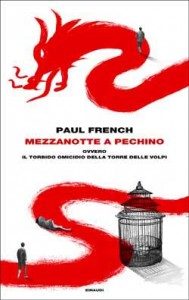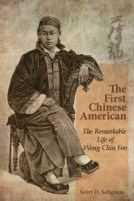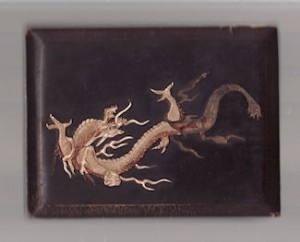Advance Notice – April 27th – China in Britain: Myths and Realities – Archiving China in Britain
Posted: March 15th, 2013 | No Comments »Details and an invitation an invitation to the next event in our AHRC China in Britain: Myths and Realities series. It is to be held on London’s Regent Street on April 27th. If you would like to attend (and it is free) then please rsvp anne@translatingchina.info to reserve a place. A full programme with abstracts and biogs etc will appear on the translatingchina website and below the (rather charming) image….
Archiving: China in Britain (5)
Saturday April 27th 2013
9.30am-5pm
The Boardroom
309 Regent Street
London W1B 2UW
09:30AM Coffee/welcome
10:00AM ‘Shifting tastes in Chinese art: a history of the Berkeley Smith collection of Chinese ceramics at Cheltenham Art Gallery & Museum (1921-1958)’ Louise Tythacott (University of Manchester )
In September 1921, Stanley Berkeley Smith (1878-1955), a British banker based in Karachi, offered his collection of Chinese ceramics on long term loan to Cheltenham Art Gallery & Museum. It comprised over 800 pieces, including sets of large celadon chargers and ornately decorated blue and white dishes. Berkeley Smith had spent the previous 21 years acquiring these objects in India at considerable personal expense – this was, for its time, Britain’s largest collection of non-court Chinese ceramics exported to the sub-continent. A Chinese porcelain room was duly opened at the Museum in 1923, dedicated to Berkeley Smith’s collection and celebrated as ‘a treasure in Cheltenham’. Tastes in Chinese ceramics, however, were changing. From the late 1920s until the 1950s, Cheltenham’s curator, D. W. Herdman, invited dealers and curators from London to inspect Berkeley Smith’s collections. These metropolitan connoisseurs displayed a marked disdain for the banker’s tastes, preferring simpler archaeological wares from China. One influential Oriental dealer, Edgar Bluett, even recommended that some of Berkeley Smith’s pieces were not ‘museum worthy’ and thus should be disposed of. So it was that between 1946 and 1960 hundreds of his pieces were sold at auction in Cheltenham and at Sotheby’s in London. Cheltenham Art Gallery & Museum today holds fewer than 150 pieces from the original Berkeley Smith collection.
This paper will examine the relationship between the collector, the museum and the art market over a period of more than 30 years through close analysis of letters in the archives. It will explore the impact of one dealer, in particular, on the future of the objects, and will also discuss how Berkeley Smith’s collection became entangled in the shifting landscapes of connoisseurship and taste in Chinese art at this time.
Dr Louise Tythacott is a Lecturer in Museology at the University of Manchester. Her research focuses on the interpretations of Chinese material culture in museums. She has worked in various capacities in museums, latterly as the curator of Asian collections at Liverpool Museum (1996-2003), part of the National Museums Liverpool. Her latest book, The Lives of Chinese Objects: Buddhism, Imperialism and Display, was published by Berghahn in 2011.
10:30AM ‘Let’s talk about the money’ Helen Wang (Dept of Coins and Medals, The British Museum)
Helen Wang looks after the Museum’s collection of East Asian coins and banknotes. Her special interests include the archaeologist Sir Aurel Stein (1862-1943), his extensive collections, the Silk Road and the use of textiles as money. She has published on fascinating aspects of the British Museum’s East Asian money collection: for example, Chinese secret society money and membership certificates; the logistics of transporting copper for coinage in nineteenth century China; paper money design in Shanghai in the 1900s; bronze token money of Jiangsu province in the 1930s; and images of Mao Zedong on Chinese money in the twentieth century.
11:00AM Coffee
11.15AM‘The First Chinese Books in London’ Frances Wood (Keeper of China Collections at the British Library)
Frances Wood studied Chinese at the universities of Cambridge, Peking and London and is Curator of the Chinese collections at the British Library. Among her books are a translation of Dai Houying’s novel Ren a ren! (Michael Joseph, 1992), Did Marco Polo Go To China? (Secker And Warburg, 1995), No Dogs and Not Many Chinese: Treaty Port Life in China 1843-1943 (John Murray, 2000), Hand Grenade Practice in Peking: my part in the Cultural Revolution (John Murray, 200), The Silk Road (University of California Press, 2002), The Blue Guide to China (revised edition, 2002), The Forbidden City (British Museum Press, 2005), The Lure of China (Yale University Press, 2009), and The Diamond Sutra (British Library, 2010).
11:45AM Panel/Questions
12:15PM ‘Mapping An Archive of Chinese Representations in British Cinema’ Hiu M. Chan (University of Cardiff)
This presentation will introduce a database that Hiu M. Chan has been compiling of British films that represent China and Chineseness from the beginning of British cinema history. Her analysis will focus on such questions as when the theme of translating China in Britain film became popular, and the impact of these films in British society.
Hiu M. Chan is a Film and Cultural Studies PhD candidate at Cardiff University. Her thesis focuses on comparisons and possible translation between Chinese and Western film theory. She has published ‘Butterfly and Spinning Top’ in Inception and Philosophy (2011), where she uses ancient Chinese philosophy and Daoist writing on dreams to interpret the film Inception. hiuandfilm.wordpress.com about
12:45 Title TBA Katie Hill (Sotheby’s)
Dr Katie Hill has extensive experience in the field of contemporary Chinese art. Her recent work includes In Conversation with Ai Weiwei, Tate Modern; selector panel/author, Art of Change, New Directions from China, Hayward Gallery, London, and specialist advisor for The Chinese Art Book (Phaidon 2013). She also co-edited a special issue of the journal Visual Art Practice on Contemporary Chinese Art and Criticality, published in 2012. She is director of OCCA (Office of Contemporary Chinese Art) – an art consultancy promoting Chinese artists in the UK.
1:30PM – 2:30PM Buffet Lunch served – all welcome
2:30PM ‘The Historical Photographs of China Project’ Robert Bickers (University of Bristol)
Since 2006, the Historical Photographs of China project has been locating, digitising, and publishing online thousands of photographs of China from the pre-1949 period. Mainly located in private hands, mostly from families in Britain with a historic connection to China, they cover a wide variety of subjects and locales, and range from the 1860s to the 1940s. The resource is open access, and currently holds over 8,000 images, with many more being processed. Its associated portal ‘Visualising China’ offers access across additional online collections. This talk introduces the project and its development, as well as some of its core collections, and discusses some of the issues this work has raised.
Robert Bickers is Professor of History at the University of Bristol and Director of the British Inter-University China Centre bicc.ac.uk
Historical Photographs of China project: hpc.vcea.net
Visualising China: visualsingchina.net
Project blog visualisingchina.net/blog
3:00PM Afternoon Tea
3.15PM ‘Found In Time: My Shanghai Heritage’ Peter Hibbard MBE, (Former President and Founder of the North China Branch of the Royal Asiatic Society)
Today Shanghai plays host to nearly 200,000 foreign residents and aspires to restore its former status as Asia’s premier international centre for trade, finance and commerce. In the 1930s over 10,000 Britons called Shanghai home and although only a dwindling number of pre-1949 residents still survive, their legacy of Britain in China has now been transposed as relatives search for the China of their forbears. Aided by expanding physical and online archives, genealogical sites and social network forums, as well as the availability of travel to China, many British families are reconstructing maps of their heritage that cross generations and continents. Some are fortunate in holding substantial family archives and these have been of keen interest to a small group of academics, but it is more often the case that only fragments of the past have survived because so much was lost in periods of turbulence from the late 1930s to the early 1950s.
Most remarkably, former foreign libraries and archives, including those of the North China Branch of the Royal Asiatic Society and the Shanghai Municipal Council, whose fate was previously unknown and many feared lost, have been opened to the public in the past decade providing inspiration and sustenance to scholars and to those piecing together personal or corporate histories. Despite the onslaught of modern development, substantial swathes of once foreign-owned Shanghai houses remain, and numerous personal and institutional artefacts are adding another dimension to an archival history that has been distanced by time and dispossession. In many ways Shanghai’s past physical form and its social ethos have been officially catalogued and displayed as something removed from the modern city. This presentation will explore issues related to recovering the past, and the resources available, and will highlight the cases of various families. It will also discuss efforts to provide platforms that assist interested parties in recognising and sharing their heritage.
Peter Hibbard MBE is a Shanghai-based historian, heritage consultant, author and travel professional who strives to foster an understanding and appreciation of Shanghai’s unique historical inheritance. He is particularly concerned with connecting the past with the present, and in 2007, following an absence of over 50 years, he resuscitated the former North China Branch of the Royal Asiatic Society in Shanghai. He has published widely, including The Bund Shanghai: China Faces West (2007) and Beyond Hospitality: The History of The Hong Kong and Shanghai Hotels, Ltd. (2010)
shanghai-flaneur.com
3.45PM ‘Maoist posters in London: A perspective from the University of Westminster’ Emily Williams (University of Westminster)
The Chinese Visual Arts Project was established at the PCL, and the first public exhibition of posters was held in April 1979. With generous help from a small number of colleagues and friends in the China field who had visited or lived on the mainland, the core of the present collection was quickly established, extending back into the 1960s.
Emily Williams is a research assistant at the University of Westminster’s Chinese Poster Collection (chinaposters.westminster.ac.uk), where she is working to catalogue and digitise the university’s collection of Chinese posters dating from the 1950s to the early 1980s. She is also a PhD student at the London Consortium (Birkbeck College, University of London), where she is studying British interactions with Cultural Revolution objects, focusing on collections and exhibitions of these objects, both during the Cultural Revolution and since.








